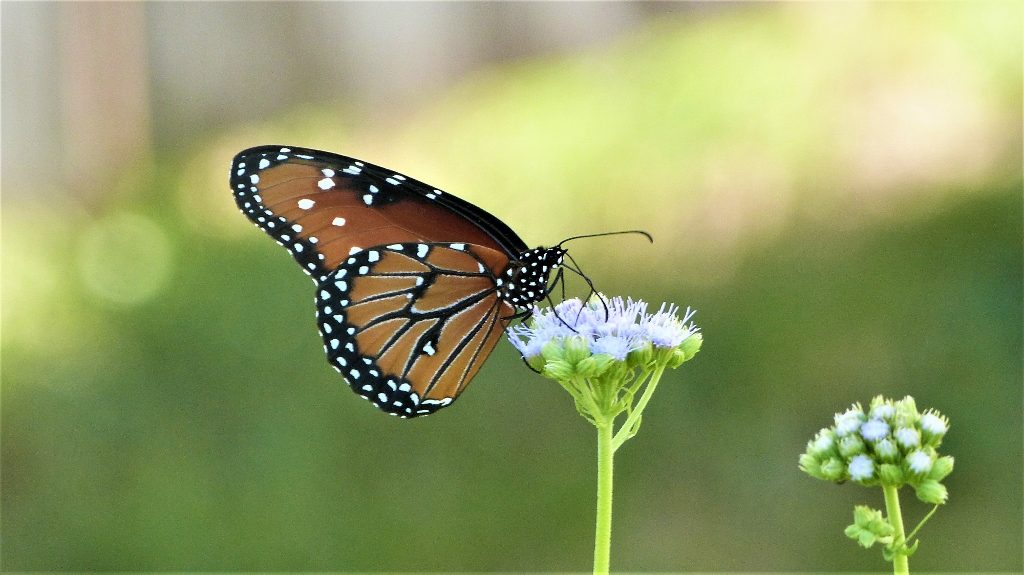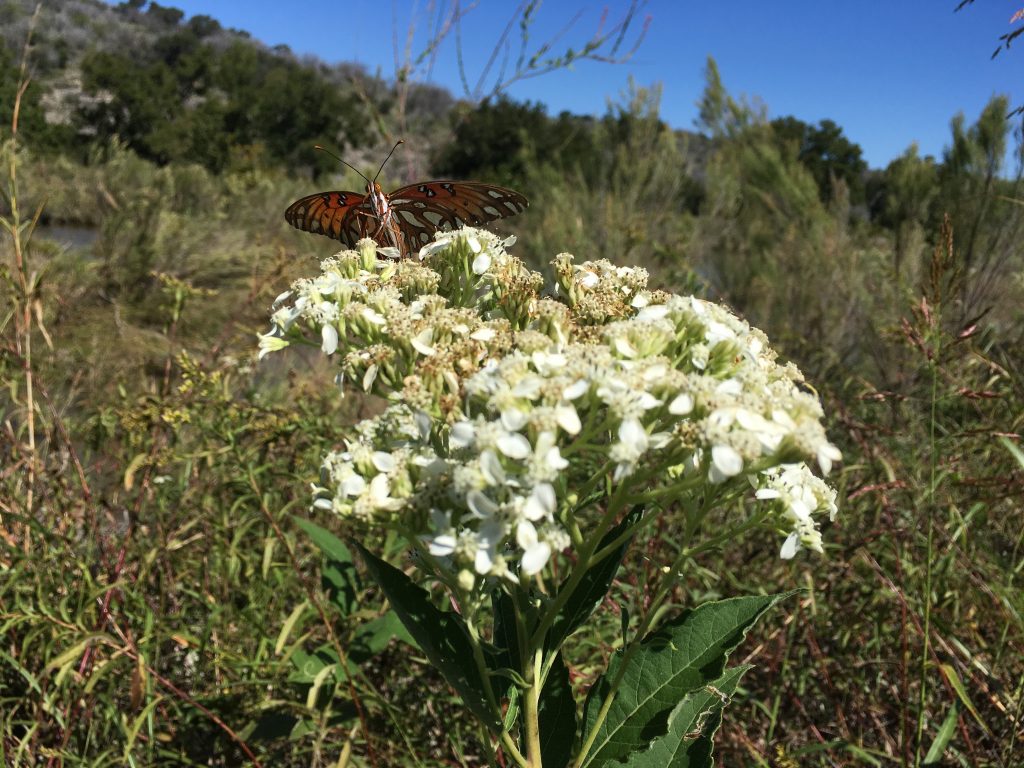It’s an election year so we thought it appropriate to ask the community to help us decide which native plant should serve as San Antonio’s Unofficial Pollinator Plant for 2020.
The nominees are…Gregg’s mistflower or Frostweed. Which will it be?
Last year citizen gardeners embraced our campaign to raise awareness of Cowpen Daisy, Verbesina encelioides, an unsung hero of the pollinator garden. We now see the gregarious yellow bloomer along the San Antonio River and in private landscapes. The goal of this campaign is to raise awareness of native plants that serve multi-purposes in the landscape–beauty, shelter, foraging for wildlife, and host and nectar sources for butterflies, bees and birds.
Here’s some quick facts about each plant.
Gregg’s Purple mistflower, Conoclinium greggi
Member of the sunflower family, called Blue boneset, Wild ageratum

Queen on Gregg’s Mistflower. Photo by Candy Roach

Gregg’s Mistflower
- Gregg’s mistflower grows one-three feet tall and blooms from March through November.
- Sometimes known as “butterfly crack,” because it’s so irresistible to butterflies.
- Perennial, is native to New Mexico, Arizona and Texas.
- Spindly puffs of light lavender to purple flowers with palmate leaves.
- Can be gregarious. Spreads through seeds and rhizomes.
Frostweed, Verbesina virginica
Member of the sunflower family, called Ice plant, Iceweed, White crown beard

Gulf Fritillary on Frostweed, Llano River. Photo by Monika Maeckle
- Erect perennial, easy-to-grow, can reach 10 feet.
- Incredible nectar source for late season monarchs and other butterflies.
- White flowers bloom in late summer-early fall in shade of trees.
- Interesting stems with flanges that extend their length.
- Spreads through seeds and rhizomes. Can be gregarious.
- COOL UNUSUAL TRAIT: Upon first freeze, the sap inside the plant stem ruptures and creates interesting “ice sculptures,” thus the name “ice plant” and Frostweed.

Both plants bloom late in the season. Both are native. One is purple, the other white. Both are winners–but we can’t decide.
Help us bring another ignored native to the gardening stage and cast your vote now.
THANK YOU!
Related posts:
- How to plan a successful butterfly garden
- Mostly native butterfly garden outperforms lawn every time
- A year in the life of an urban butterfly garden
- Downtown River walk plot converts to pollinator garden, creature haven
- Converting your Lawn to a Butterfly Garden
- San Antonio becomes first National Wildlife Federation Monarch Champion city
- Tropical Milkweed: To Plant it or Not is No Simple Question
- How to raise Eastern Swallowtails
- How to raise Monarch butterflies at home
Like what you’re reading? Don’t miss a single post from the Texas Butterfly Ranch. Sign up for email delivery, like us on Facebook, or follow us on Twitter, @monikam.



Is there someone at the Butterfly Ranch who could make a presentation to a group in Georgetown? We can offer a $100 stipend and lunch fr your effort.